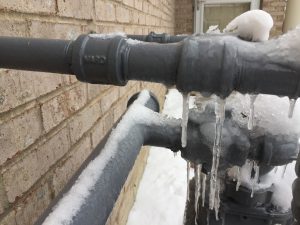The content further down on the subject of Prevent Frozen Pipes is relatively entertaining. Check it out for yourself and see what you think of it.

Winter can wreak havoc on your plumbing, particularly by freezing pipelines. Here's exactly how to avoid it from occurring and what to do if it does.
Intro
As temperatures decrease, the danger of frozen pipes increases, potentially resulting in expensive repair work and water damage. Recognizing just how to avoid frozen pipes is crucial for home owners in chilly climates.
Understanding Icy Pipes
What causes pipelines to freeze?
Pipelines ice up when exposed to temperature levels below 32 ° F (0 ° C) for expanded periods. As water inside the pipelines freezes, it broadens, putting pressure on the pipe wall surfaces and potentially creating them to break.
Risks and problems
Icy pipes can bring about supply of water disturbances, building damage, and costly repairs. Burst pipes can flooding homes and create extensive structural damage.
Indicators of Frozen Piping
Identifying icy pipelines early can stop them from breaking.
Just how to recognize icy pipelines
Look for decreased water circulation from taps, uncommon smells or sounds from pipelines, and visible frost on subjected pipes.
Prevention Tips
Shielding at risk pipelines
Wrap pipes in insulation sleeves or use warm tape to secure them from freezing temperature levels. Focus on pipes in unheated or external areas of the home.
Heating techniques
Maintain indoor spaces properly warmed, particularly locations with plumbing. Open closet doors to allow cozy air to flow around pipes under sinks.
Securing Exterior Plumbing
Garden pipes and exterior taps
Disconnect and drain garden pipes prior to winter months. Install frost-proof spigots or cover outdoor faucets with insulated caps.
What to Do If Your Pipelines Freeze
Immediate actions to take
If you suspect frozen pipelines, maintain taps available to soothe pressure as the ice melts. Use a hairdryer or towels soaked in hot water to thaw pipes slowly.
Long-Term Solutions
Structural modifications
Take into consideration rerouting pipelines far from outside wall surfaces or unheated locations. Add additional insulation to attics, basements, and crawl spaces.
Upgrading insulation
Invest in top quality insulation for pipes, attic rooms, and wall surfaces. Correct insulation assists preserve consistent temperature levels and lowers the danger of frozen pipes.
Verdict
Protecting against icy pipes calls for positive steps and quick feedbacks. By comprehending the causes, indications, and preventive measures, homeowners can shield their plumbing throughout winter.
5 Ways to Prevent Frozen Pipes
Drain Outdoor Faucets and Disconnect Hoses
First, close the shut-off valve that controls the flow of water in the pipe to your outdoor faucet. Then, head outside to disconnect and drain your hose and open the outdoor faucet to allow the water to completely drain out of the line. Turn off the faucet when done. Finally, head back to the shut-off valve and drain the remaining water inside the pipe into a bucket or container. Additionally, if you have a home irrigation system, you should consider hiring an expert to clear the system of water each year.
Insulate Pipes
One of the best and most cost-effective methods for preventing frozen water pipes is to wrap your pipes with insulation. This is especially important for areas in your home that aren’t exposed to heat, such as an attic. We suggest using foam sleeves, which can typically be found at your local hardware store.
Keep Heat Running at 65
Your pipes are located inside your walls, and the temperature there is much colder than the rest of the house. To prevent your pipes from freezing, The Insurance Information Institute suggests that you keep your home heated to at least 65 degrees, even when traveling. You may want to invest in smart devices that can keep an eye on the temperature in your home while you’re away.
Leave Water Dripping
Moving water — even a small trickle — can prevent ice from forming inside your pipes. When freezing temps are imminent, start a drip of water from all faucets that serve exposed pipes. Leaving a few faucets running will also help relieve pressure inside the pipes and help prevent a rupture if the water inside freezes.
Open Cupboard Doors
Warm your kitchen and bathroom pipes by opening cupboards and vanities. You should also leave your interior doors ajar to help warm air circulate evenly throughout your home.

I'm just very focused on Winter Plumbing Precautions: Preventing Frozen Pipes and I am hoping you liked our entry. Are you aware of another individual who is intrigued by the niche? Take a moment to promote it. I am grateful for being here. Come back soon.
Schedule Your Job Now